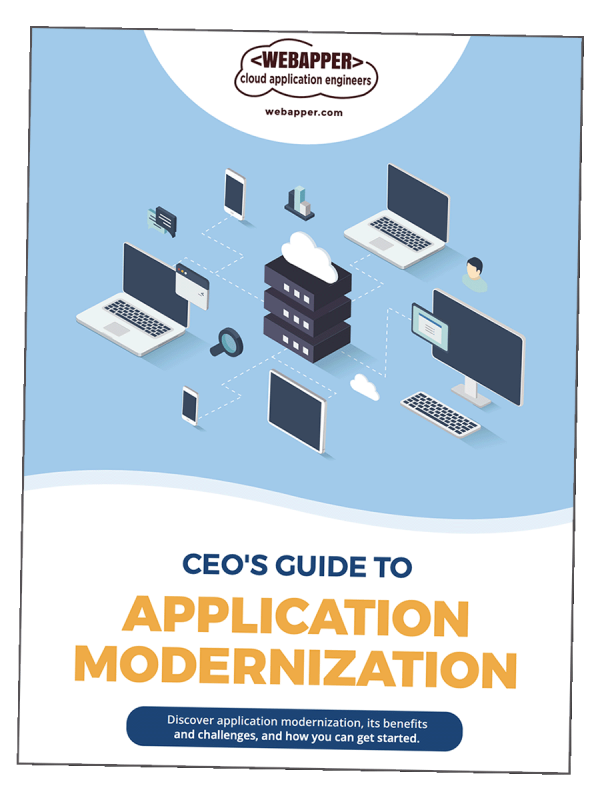Is Your Tech Stack Due for Modernization?
Deciding whether to modernize your legacy applications isn’t just an IT decision — it’s a strategic business move. Rather than diving into another technical overview, let’s walk through a practical framework to evaluate if modernization should be your next strategic priority. Use this application modernization playbook to cut through the noise and make a clear-eyed assessment of your needs.
Step 1: Run the Numbers
Before you entertain any modernization discussions, gather these specific metrics:
- Monthly maintenance costs for your current systems
- Average time to deploy new features
- Number of critical incidents in the past 6 months
- Time spent on emergency fixes vs. new development
- Revenue impact of system downtime
If you’re spending more than 70% of your IT budget maintaining existing systems or your deployment cycle exceeds two weeks, those are red flags that demand attention.
Step 2: Map Your Competitive Position
Create a simple matrix:
- List your top three competitors
- Note their release frequency for new features
- Track their digital capabilities you can’t match
- Document customer features they offer that you don’t
If you find yourself consistently playing catch-up or unable to match competitor offerings due to technical limitations, your legacy systems are actively eroding your market position.
Step 3: Conduct the “Future-Ready” Test
Ask your technical teams these specific questions:
- Can we scale our current systems by 3x without a complete overhaul?
- Could we add AI capabilities to our existing architecture?
- How quickly can we integrate new third-party services?
- Can we support mobile-first features without rebuilding?
If the answer to any of these is “no” or “it would take months,” your systems are holding you back from future growth opportunities.
Step 4: Calculate the Cost of Inaction
Beyond the obvious maintenance costs, quantify:
- Lost revenue from system limitations
- Customer churn due to poor user experience
- Missed market opportunities from slow deployment
- Extra staffing costs for manual processes
- Security and compliance risk exposure
This often reveals that maintaining the status quo is more expensive than modernizing.
Step 5: Assess Your Modernization Readiness
Before giving the green light, evaluate:
Your Team’s Capability
- Do you have cloud-native development experience in-house?
- Is your team familiar with microservices architecture?
- Do you have DevOps expertise?
Your Organization’s Appetite
- Can your business handle some disruption during transition?
- Is there executive sponsorship for a multi-year journey?
- Do you have budget flexibility for cloud services?
Making the Go/No-Go Decision
If you’ve followed these steps, you should have clear indicators pointing toward action or patience. But here’s a simple decision framework:
Modernize Now If…
- Your maintenance costs exceed 70% of IT budget
- You’ve had multiple competitive losses due to technical limitations
- Your system limitations are affecting revenue
- You’re failing the “Future-Ready” test in multiple areas
- The cost of inaction exceeds modernization investment
Wait If…
- Your systems are stable and meeting current needs
- You’re lacking key technical capabilities in-house
- Major business changes are coming in the next 6 months
- You don’t have executive alignment
Is Your Tech Stack Due for Modernization?
Modernization isn’t an all-or-nothing proposition. Start with high-impact, lower-risk applications to build momentum and prove value. Create a phased approach that aligns with your business objectives and risk tolerance. The key is making an informed decision based on data, not fear or FOMO. Hopefully this application modernization playbook cuts through the noise and helps make a solid plan.



Leave A Comment